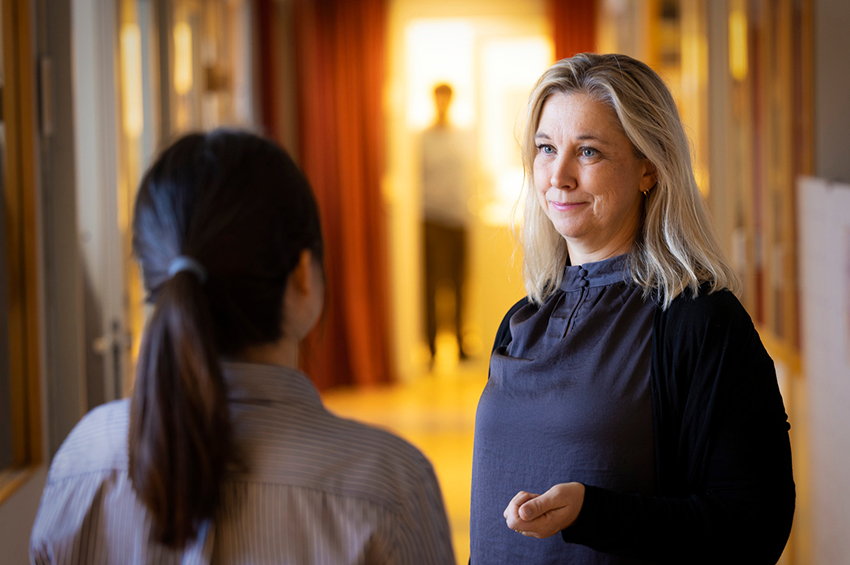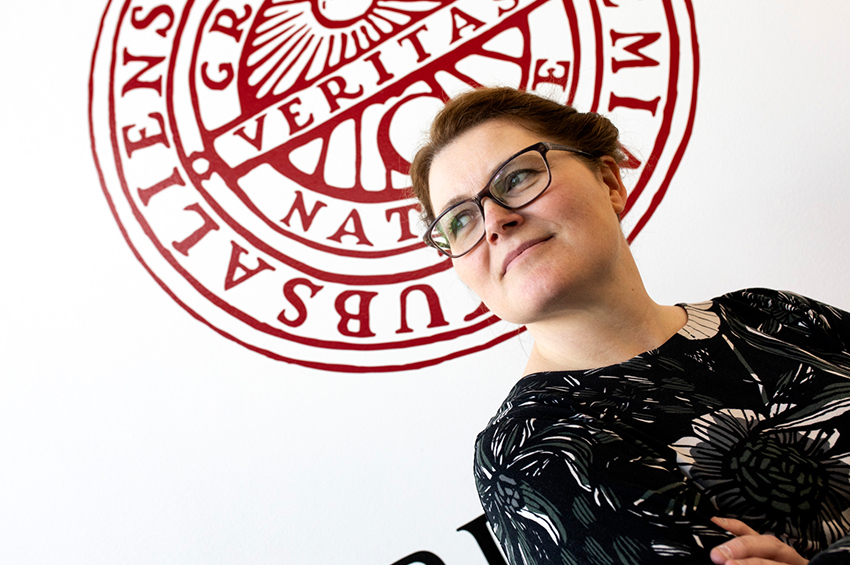The Inauguration of Professors is just around the corner and Sara Mangsbo and Maria Kjellsson from the Department of Pharmacy are among those who will be installed. The department, which has existed since 1964, will become the first in the Faculty of Pharmacy to have more women than men among its professors.
Lena Friberg, who recently became head of the Department of Pharmacy, believes this is due to an inclusive and positive working environment that includes both female and male role models with strong research careers.

Lena Friberg, head of the Department of Pharmacy. Photo: Mikael Wallerstedt.
“I’m very pleased that we have managed to attain a good balance, which we are the first department in the faculty to achieve. My hope is that by encouraging members of staff and injecting positive energy, we can inspire even more young women to choose an academic career, which I am convinced will help inspire a broader outlook throughout our organisation,” says Friberg, Professor of Pharmacokinetics and Pharmacodynamics.
Not alone in having more women than men
However, according to Nina Almgren, human resources strategist at Uppsala University, it is not unheard of for a department to have more female than male professors. She refers to a status report for 2022 showing the gender breakdown at the University’s departments.
“The report shows that there are 10 departments where 60 per cent or more of the professors are women. Then there are nine departments that fall exactly within the gender equality interval (40–60 per cent), and then substantially more that fall outside the gender equality interval and where men predominate. It varies from department to department,” says Almgren.
The proportion of female professors at the University is slowly increasing over time. In 2017, 29 per cent of the professors were women. In 2022, the figure had risen to 34 per cent.
Could take 25 years to reach gender equality
So how long will it be before Uppsala University can achieve gender balance among its professors? It is difficult to know for sure. A report from the Swedish Research Council from 2021, which looks at higher education as a whole, indicates that it could be another 25 years before there are as many female as male professors. However, the picture varies depending on discipline.
“The report concludes that on average, women attain the title of professor two years later in life than men. Assuming they retire at the same age, this means women are not professors as long as men. Another factor to consider is that women are more often engaged in fields that have a lower proportion of professors,” Almgren notes.
Moreover, women are more liable than men to work in research fields and professional categories that have a relatively high proportion of teaching and a relatively low proportion of research. As a result, it takes longer to qualify for appointment as a professor. The report states that women say they have less time for research than men say they have.
Almgren also draws attention to research and projects that show that it is primarily women who spend time on service activities for which no credit is given in an academic career.
“Researchers sometimes talk about academic housework. If you belong to an underrepresented gender you may also have to spend more of your working hours on those types of duties.”

Another factor that can influence the gender breakdown among professors is that in some subjects there are fewer women than men at all levels. Interests and educational choices are formed way back in childhood, which means that action is needed at multiple levels to create change, says Nina Almgren. Photo: Mikael Wallerstedt.
How to go about achieving gender balance
One of the target areas in the University’s Gender Mainstreaming Plan is counteracting the existence of various types of bias. This involves combatting preconceived ideas that can be either to the advantage or to the disadvantage of certain individuals and groups in recruitment and assessment processes, so that selections are made on the basis of actual competence relevant to the job.
“We need to think about how we do things – about the methods and processes we employ in recruitment, promotion and allocation of resources. How can we apply these processes to diminish the scope for bias? It is possible to adopt procedures and approaches that reduce the risk that bias will influence the decision-making and consideration process.”
It takes a long time to become a professor and these issues therefore demand active efforts at all levels of the University, efforts that are already being made in many areas, Almgren says. The path to the goal leads via broad and thorough work environment and equal opportunities action.
“It may be a matter of minor unfairnesses, but a succession of minor unfairnesses can ultimately result in major consequences. To promote gender balance among professors, you really have to make a start early in the research career. It’s a long-term undertaking that has a lot to do with creating a good environment for work and study so as to attract talent and retain outstanding researchers.”
